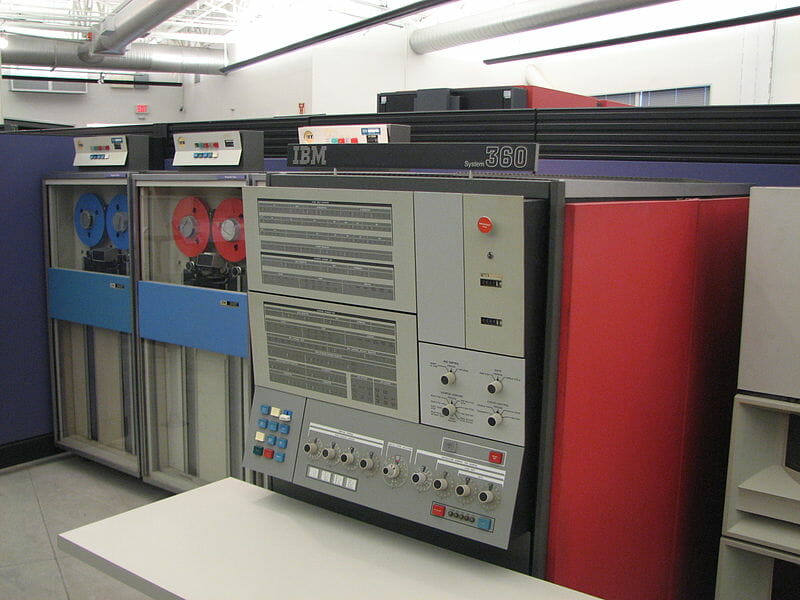When the then chairman of IBM, Thomas Watson, said in 1943, that “there is a world market for maybe five computers,” he wasn’t thinking about the technology cycle. For that matter, when Popular Mechanics stated: “Where a calculator like ENIAC today is equipped with 18,000 vacuum tubes and weighs 30 tons, computers in the future may have only 1000 vacuum tubes and perhaps weigh only 1½ tons,” it wasn’t thinking about distributed computing. But then we didn’t know about computers then, let alone the technology cycle and edge computing referred to lots of mathematicians on a mountain climb.
There was a time when computing meant lots of people working together doing mathematics for some greater aim. For example, NASA employed mathematicians working together for the space programme. These early ‘’computers’ were made famous in the movie Hidden Figures, about Katherine Johnson, the female black mathematician, who helped pioneer the use of computers.
But then we moved to actual machines, what we would now think of as computers — massive beasts, that took up a whole room, maybe in the basement and which hardly anyone understood. Data was stored on 12-inch disc drives. The mini-computer first emerged in the 1960s, at the time the New York Times suggested that the definition of a mini-computer was that it cost less than $25,000. Data was typically stored on 9-inch drives. The technology cycle, which today has swung towards edge computing, had its first jump from mainframe (centralised) to mini (distributed.)

Of course, when IBM first revealed the PC, not many people thought it would change the world. Indeed, the theory known as innovators dilemma looks at how the disc drive industry was disrupted with the changes in computers — at that time 5.25 inch disc drives for PCs were seen as little more as toys, to support ‘the toy’ called a PC. History shows they were wrong — Bill Gates realised his dream of a computer on every desk — the technology cycle had swung to centralised.
Microsoft explains the edge; what it is, the use cases and challenges
The next switch to distributed began with the internet but gained momentum with the cloud. The cloud turned IT from an overhead requiring a large upfront investment and which was hard to change, to a variable cost, easy to change, easy to turn up and down. The cloud was a vital enabler in creating the start-up and agile work practices we know today — the technology cycle swung towards distributed.
Of course, we have seen a similar story in TV and movies: the cinema — centralised — to TV — terminals — to VHS and DVDs and now online TV services such as Neflix.
Now the technology cycle has thrown up edge computing but the shift is still in its infancy.
The shift was partly created by the Internet of Things — the massive explosion in devices, all with their own processing power. This processing power was often under-utilised. The swing in the technology cycle to edge computing has also been driven by privacy concerns — the ability to store personal data on individuals’ own devices, rather than somewhere in the cloud.
The key shift, though, in the technology cycle towards Edge computing has occurred because of all that spare capacity created for other purposes. The CapEx has been funded. We have already paid for smartphones, wearable tech, sensors, computing power in cars, cranes, and in time in traffic lights, car parks…the list goes on.
The five pillars of Edge Computing
But the technology cycle shift to edge computing won’t ever be 100%. The cloud remains a vital technology and in many ways is complementary. Edge devices may be used to store sensitive personal data locally, or for processing power, when the cloud gets clogged up, or because of bandwidth limitations, but the list of cloud computing advantages is long — for one thing, it is vital for collaboration. Deep learning algorithms are often processed on the cloud via super-powerful computers.
In time, the technology cycle may swing again from edge computing — distributive — to centralised. Quantum computers, for example, may never be cheap enough for us all to own one. Many can only operate at minus 273 degrees, hardly technology to sit in our back pocket. Likewise, 5G may help solve the problem of bandwidth.
But the technology cycle never swings to extremes. Mainframes didn’t die in the age of minicomputers, dumb terminals were still used by many organisations even in the heyday of the PC. Just as the technology cycle swinging towards edge computing is unlikely to spell the death of the cloud, the swing back to centralised, supported by 5G and quantum, will not kill edge computing. No matter how fast the internet connection, it will always be constrained by the speed of light. For applications requiring thousands of instructions a second, or processing of data in milliseconds, the proximity between the data, processing and application matters. The Internet of Things revolution is only just beginning, all that CapeEx going into devices is begging for utilisation. Privacy is set to become an ever more important issue and that means processing on the edge.
Cyber security for IoT and edge computing
Related articles
Accessing the benefits of edge computing — a must for industry 4.0
Protecting the edge of IoT as adoption rates for the technology grow
IBM and AT&T continue alliance with cloud, edge and 5G ambition: another game changer?
Data intelligence — is edge analytics the saviour of IoT?
Will 5G access and edge deliver mobile operators a competitive advantage?







